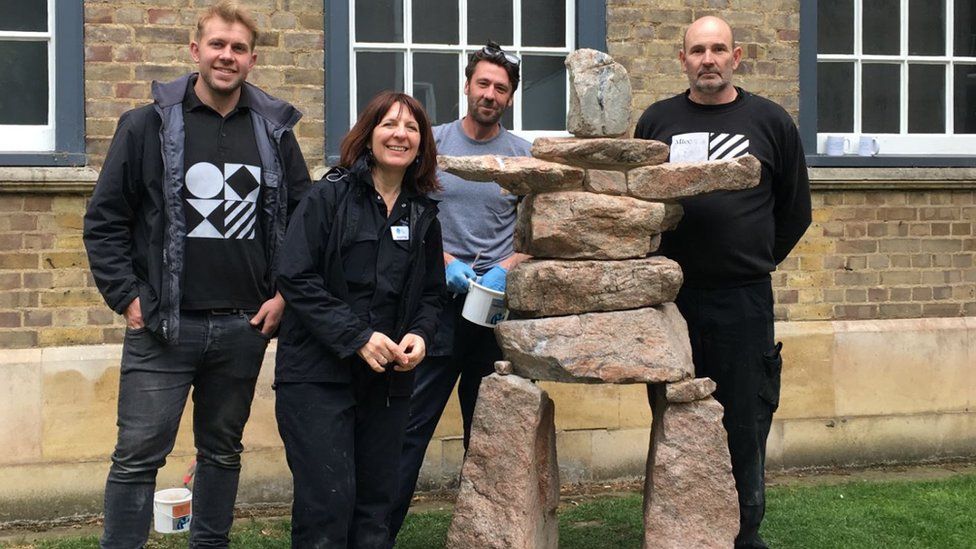Cambridge Scott Polar Inuit 'muffin top' sculpture fixed
- Published

An Inuit sculpture that has survived being broken, put together the wrong way and developing a "muffin top" tummy is back on display after a one-year project to fix it.
The granite inukshuk - a man-shaped structure designed as a marker for Arctic hunters - was created by an Inuit artist in Canada in the 1960s.
It was donated to Cambridge's Scott Polar Research Institute in the 1970s.
Staff said they hoped the renovation was a "fitting tribute" to the artist.
Also known as inuksuks, the stone cairns are sometimes built in a human shape and were originally used for orientation in the Arctic tundra.
The polar institute's (SPRI) pink granite inukshuk was created in 1964 by Inuit sculptor Aqjangajuk Shaa and stood on Baffin Island in northern Canada's Nunavut territory.
It was purchased by London art dealer Charles Gimpel, whose family later donated it to the Cambridge institute, where it has stood since 1979.
During its time, one of its arms fell off and was glued back on - but when it succumbed to gravity yet again, in 2013 the inukshuk was restored using a dowel.
The inukshuk was designed to balance without any fixings, however, for safety reasons it was cemented together in 2010.
The cement created what staff described as "a rather unsightly waistband that we had cruelly taken to calling its 'muffin top'".
In 2017, an "excited visitor" managed to break it in two.
During the latest restoration, staff uncovered several old photographs of it in Canada which revealed the arm that kept falling off had been put on the wrong way round and remained that way until now.
That was corrected and its legs were repositioned "to give the impression of movement, which was also more apparent in the early pictures".
Mtec Installations, tasked with moving the inukshuk for the conservators, described it as a "highly complex and extremely unique" project.
Sculptor Shaa died in March this year, but an SPRI spokeswoman said: "The inukshuk in its newly re-invigorated state is a fitting tribute to Shaa's legacy as a celebrated artist."
- Published29 September 2017